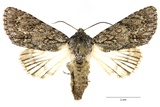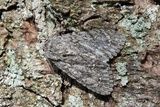Acronicta aceris (Linnaeus, 1758) Species
Last modified: Nov. 17, 2025, 7:12 p.m.
A fairly common species throughout Belgium.
This species is considered Least Concern according to the IUCN Red List category for Flanders 2023.
Details
- Classification
- Family: Noctuidae > Subfamily: Acronictinae > Genus: Acronicta > Subgenus: Acronicta > Species: Acronicta aceris
- Vernacular names
- Bont schaapje (NL), Sycamore (EN), La Noctuelle de l'Erable (FR), Ahorn-Rindeneule (DE)
- First mention in Belgium
- De Sélys-Longchamps E. 1844. Énumération des insectes Lépidoptères de la Belgique. — Mémoires de la Société royale des Sciences de Liége 2: 1–35. On page 10 (as Acronycta aceris L.). view page
- Status
-
Native
Distribution
Bionomics
The species hibernates, sometimes more than once, as a pupa in a double-layered cocoon in a bark crevice or among leaf litter or moss.
The adults come to light and sugar.
No pictures yet!
Flight periods
The adults fly in one generation a year from early May till mid-August.
Observed on
- Host plant (species):
- Aesculus hippocastanum, Acer pseudoplatanus and Acer campestre
- Host plant (genera):
- Betula and Quercus
The larva lives mainly on Acer pseudoplatanus and Acer campestre but has also been observed on Aesculus hippocastanum, Betula, and Quercus.
No pictures yet!



